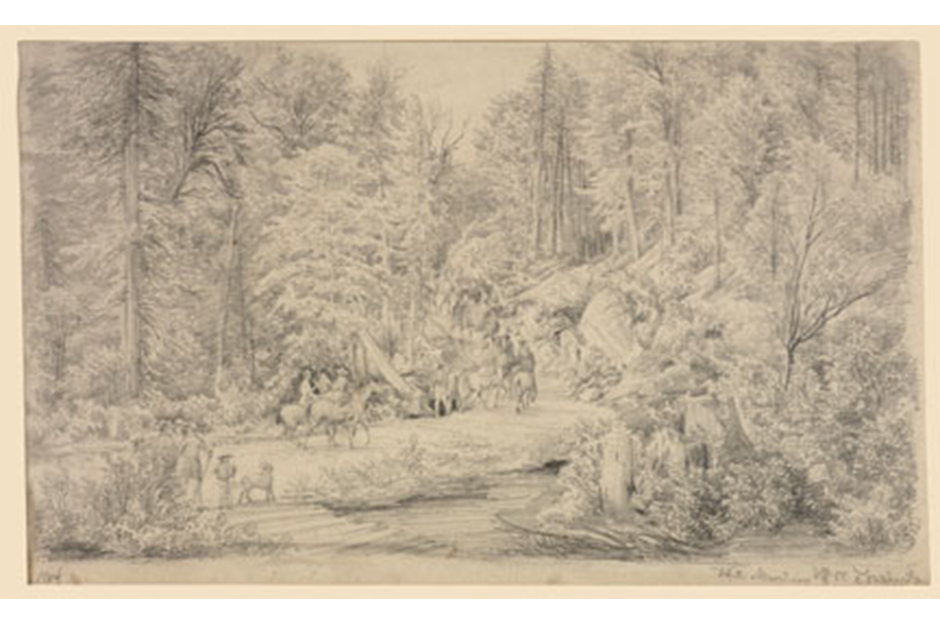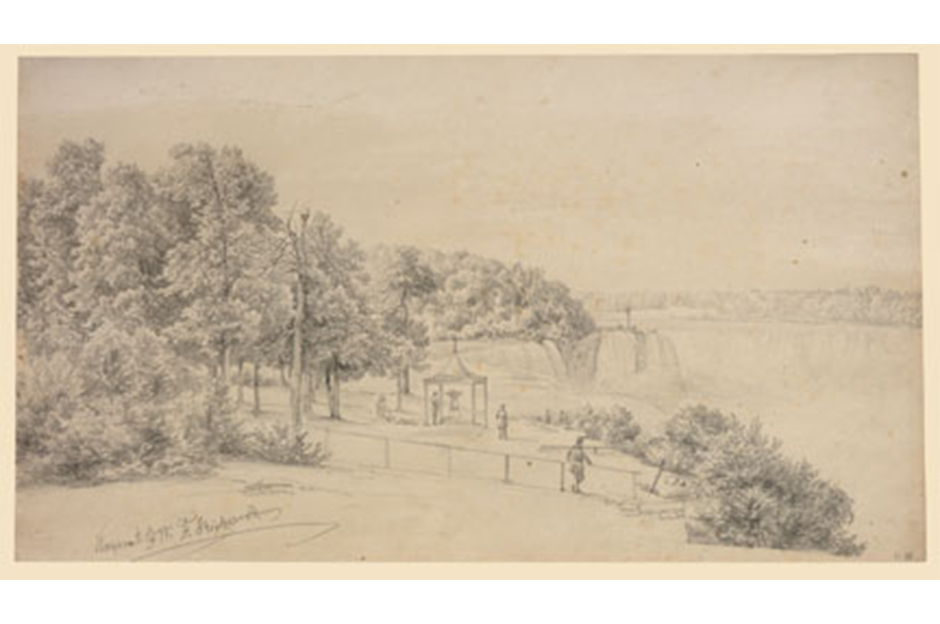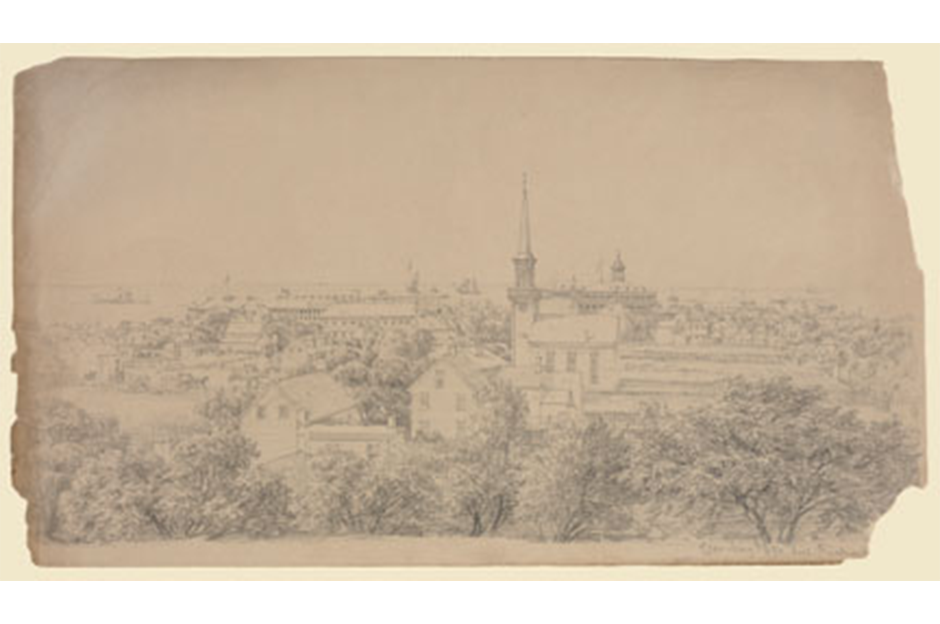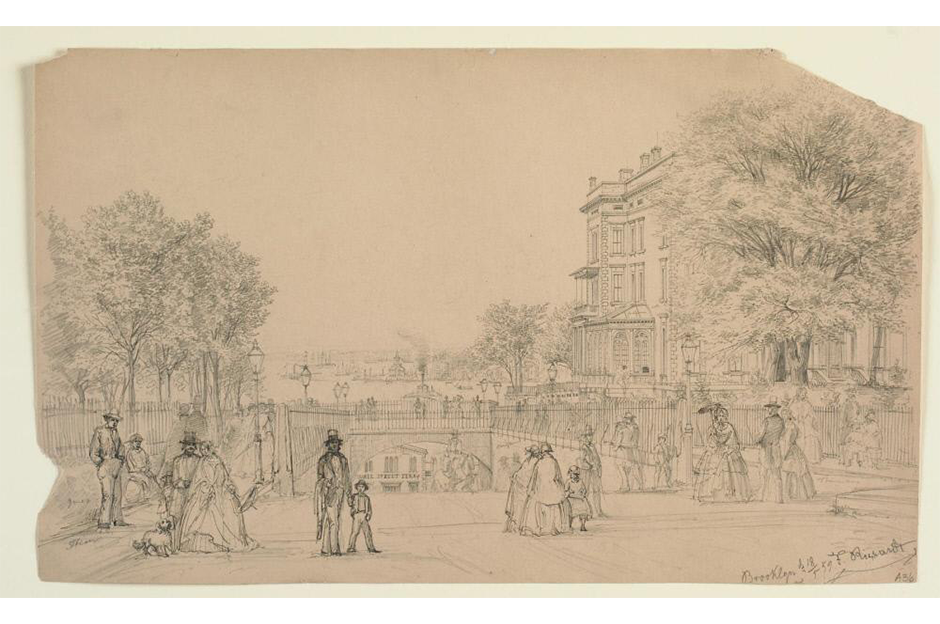Fifty-six magnificently executed drawings by the 19th-century Danish-American landscape artist Ferdinand Richardt (1819-1895)--that have not been publicly exhibited for at least a century--are featured in the landmark exhibition, Ferdinand Richardt: Drawings of America, 1855-1859. Museum of Art Director and Chief Curator Paul D. Schweizer and Melinda Young Stuart, an independent scholar and curator of the Keller Family Trust Richardt Collection, organized this groundbreaking exhibition at the Munson-Williams-Proctor Arts Institute.
When the 36-year-old Ferdinand Richardt set foot in New York in July 1855 he was already a successful professional artist in his native Denmark. He enjoyed a noteworthy reputation during the Golden Age of Danish painting and was patronized by the Danish royal family. He trained, in part, under the renowned Danish neoclassical sculptor, Bertel Thorvaldsen (ca. 1770-1844), and after 1839 exhibited his paintings at the annual exhibitions of the Royal Danish Art Academy in Copenhagen.
Before his arrival in New York Richardt had also published more than one hundred lithographs reproducing his meticulous drawings of Scandinavian manor houses and their grounds, a project that provided the first visual record of that region's great residences. When Richardt was in America he made plans to publish a series of prints of the natural scenery and public architecture he encountered here. Ultimately, however, this plan never came to fruition.
Between 1855 and 1859 Richardt traveled throughout eastern North America drawing and painting a wide variety of subjects. The phenomenon of tourism, then expanding at a terrific rate in America, attracted Richardt to the country's rivers, mountains, spas and resort hotels, and to the people who gathered there, as well as to America's cities and new architecture.
Today, Richardt is chiefly remembered for his impressive views of Niagara Falls. While a number of his Niagara Falls paintings are in museums in the United States, the hundreds of on-site drawings he made during his travels from New York City to Kentucky, Minnesota, Canada and points in between remain almost totally unknown. These drawings are remarkable examples of 19th-century draftsmanship because of the quality of their execution and the historical documentation they provide about pre-Civil War America. Over a decade ago Melinda Young Stuart discovered them in the possession of Richardt's great-granddaughter, Tina Keller, who with her husband Frank had diligently maintained the family tradition of preserving the collection. Since then, and with the cooperation of the Keller family, Stuart has carried out extensive research on the artist.
In 2003, with the Danish scholar Niels Peter Stilling, Stuart published the first detailed account of Richardt's career in Denmark and the United States. She also facilitated the Keller family's extraordinary donation of 450 of Richardt's Scandinavian-subject drawings to the Danish National Museum; these were subsequently exhibited in several Danish museums in 2003 and 2004.
This is the first modern exhibition of Richardt's drawings to take place in the United States. It brings well-deserved attention to Richardt's American works and helps to broaden our understanding of the artistic currents that were present in America during the decade of the 1850s. No less importantly, the drawings help to frame that artistic milieu in a more richly textured international context.
A fully-illustrated exhibition catalog, with essays by Melinda Young Stuart, Paul D. Schweizer, and Michele Phillips, a conservator of paper and photographic materials at West Lake Conservators, Ltd., Skaneateles, New York, has been published by the Munson-Williams-Proctor Arts Institute to accompany the exhibition.
 Denotes programs designed especially for teachers.
Denotes programs designed especially for teachers.
 Programs and workshops for children.
Programs and workshops for children.






